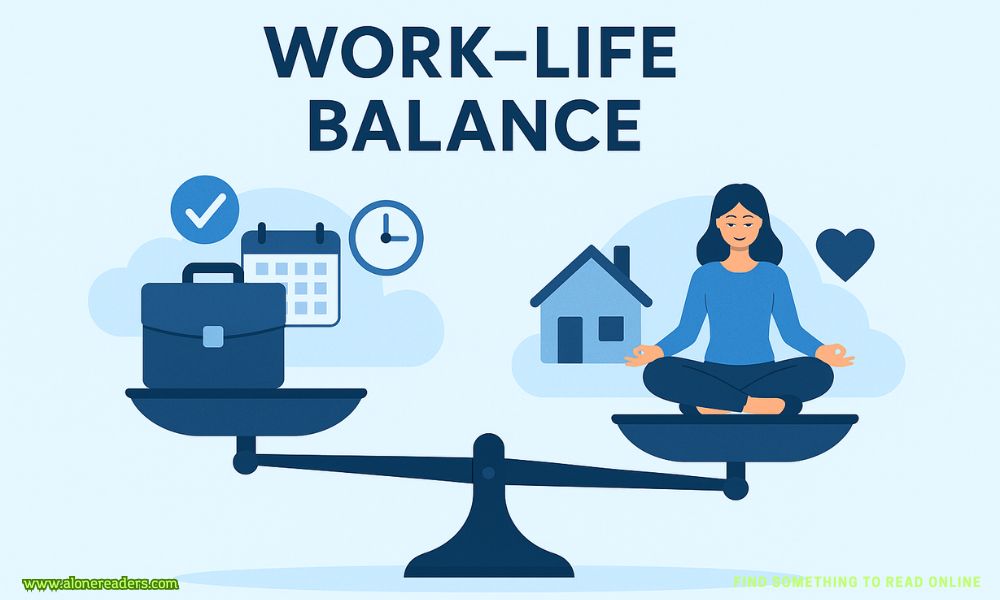
In today’s fast-paced world, the phrase work-life balance is often tossed around with little depth. But for professionals navigating demanding careers while trying to preserve personal health, family time, and mental clarity, the concept is critical. Achieving real balance is not about splitting time 50/50—it’s about intentional boundaries, strategic planning, and self-awareness. It’s about living in alignment with your values. Below, we delve deep into expert-level, actionable strategies that go beyond clichés and help you build a sustainable routine for both your career and your life outside of work.
Understand your personal values and life priorities
Balance is subjective. For one person, it might mean leaving work at 5 p.m. sharp for family dinner. For another, it’s being able to work late but still take a midday break to exercise or meditate. Take the time to list your core values—such as family, health, learning, or freedom—and rank them. This exercise forms the foundation for how you’ll allocate your time.
Audit your current time usage
Track your time in 30-minute increments over one week using a journal or a time-tracking app. Identify patterns—when you are most productive, when you waste time, and how much “personal” time is reactive (scrolling social media, binge-watching shows) instead of restorative (talking to loved ones, pursuing hobbies). Balance starts with data.

Create a defined start and end to your workday
Even if you’re a freelancer or remote worker, having consistent "working hours" helps your brain transition between professional and personal modes. Use digital tools like calendar alerts, smart lighting changes, or even a specific end-of-day ritual like a walk or journal session to signal work is over.
Limit after-hours communication
Disable work email or messaging app notifications after hours. Inform your team or clients of your availability expectations. Consider using auto-responders during weekends or non-working hours. Protecting personal time sets a cultural standard—especially if you’re in a leadership role.
Physically separate workspaces
If you work from home, dedicate a distinct area—even if it’s a small desk in the corner—for professional tasks. Avoid working from bed or the couch. Physical space boundaries reinforce psychological separation, reducing burnout and promoting rest.
Focus on high-impact tasks
The Pareto Principle (80/20 rule) suggests 80% of your results come from 20% of your actions. Each morning, identify the one or two tasks that will drive the most results that day. Focus your peak energy hours on those. Everything else is secondary.
Use structured task management systems
Leverage methods like the Eisenhower Matrix (urgent vs. important), time-blocking, or the “1-3-5 Rule” (1 big task, 3 medium, 5 small per day) to plan your workload. This clarity helps prevent tasks from spilling over into personal time.
Batch similar tasks
Multitasking reduces productivity. Instead, group similar tasks—like answering emails, attending meetings, or administrative work—into scheduled blocks. This minimizes context switching and gives you more focused free time.
Recognize that balance is fluid, not static
There will be seasons when work dominates—launches, deadlines, transitions—and that’s okay. The key is to rebalance when that phase ends. What matters is the long-term equilibrium, not daily perfection.
Plan ahead for “tilted” weeks
If you anticipate a busy work week, prepare personally in advance. Batch cook meals, postpone non-essential social events, or delegate household responsibilities. Likewise, after high-pressure periods, schedule restorative time off—even half days count.
Understand your natural rhythm (chronotype)
Are you a morning lark or a night owl? Align deep work with your peak mental alertness hours. Use low-energy times for routine tasks. Syncing your calendar with your biology makes you more efficient, freeing up more personal time.
Build recharge rituals into your day
Work breaks aren’t luxuries—they’re maintenance. Try the Pomodoro Technique (25-minute focus blocks with 5-minute breaks), walking meetings, or a 10-minute afternoon nap. Mental and physical renewal increases both performance and life satisfaction.
Monitor burnout signs proactively
Pay attention to mood shifts, chronic fatigue, irritability, or lack of motivation. These are early signs of burnout. Schedule recovery days proactively and talk to a professional if needed. Prevention is more effective than repair.
Don’t “fit in” personal life—schedule it first
Put family dinners, weekend plans, gym time, or hobbies on your calendar before filling it with work meetings. If you wait to see what’s left over, there will always be nothing left.
Establish shared routines with loved ones
Consistent rituals—like Friday game nights with kids, Sunday hikes with your partner, or solo coffee shop mornings—give your personal life rhythm and priority. These routines serve as emotional anchors amid a chaotic work week.
Communicate openly with your family
Talk about your work schedule, stressors, and boundaries with your partner or family. Involve them in decision-making where feasible. When your loved ones feel heard and informed, they become allies, not silent victims, in your pursuit of balance.
Use flexible work policies wisely
If your employer offers hybrid schedules, mental health days, or flex hours, utilize them. Don’t feel guilty. These exist to support sustainability—not just performance. If they don’t exist, consider suggesting trial initiatives backed by productivity data.
Automate and delegate
Use automation tools for repetitive tasks—calendar bookings, invoice management, file organization. Delegate non-critical work to junior colleagues, virtual assistants, or software. Your goal is to reduce unnecessary decision fatigue.
Silence the “always-on” culture
Turn off non-essential app notifications. Avoid glorifying overwork in workplace conversations. Celebrate productivity, not availability. Model sustainable habits for others, especially if you’re a manager.
Set a weekly review ritual
Each Sunday evening or Monday morning, reflect: What worked last week? Where did work bleed into personal time? How do you feel—energized or drained? Use those insights to adjust the upcoming week’s plan.
Track your life metrics, not just KPIs
Besides career goals, track life metrics like number of hours slept, steps walked, time spent with family, or hobbies enjoyed. These measurements keep you anchored in the bigger picture.
Rebalance with every life change
Marriage, children, moving cities, or changing jobs can throw off existing routines. When life changes, your definition of balance should evolve too. Pause and re-strategize whenever a new chapter begins.
Conclusion: Balance is a Skill, Not a Destination
Work-life balance isn’t something you achieve once and forget. It’s a living system that demands reflection, boundaries, flexibility, and periodic recalibration. The most successful people aren’t those who work the longest—they are the ones who align their actions with their priorities, protect their energy, and remain present in whatever sphere they’re in.
Mastering this balance is not a luxury—it’s a necessity for long-term personal wellbeing and professional growth. With the strategies outlined above, you don’t just survive the juggling act of modern life—you thrive in it.